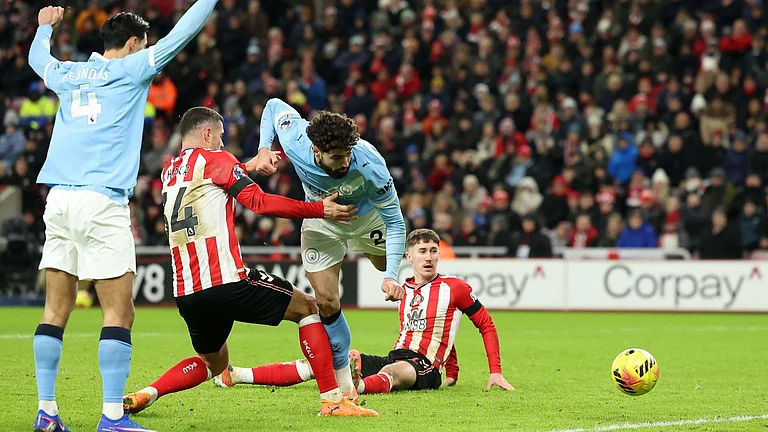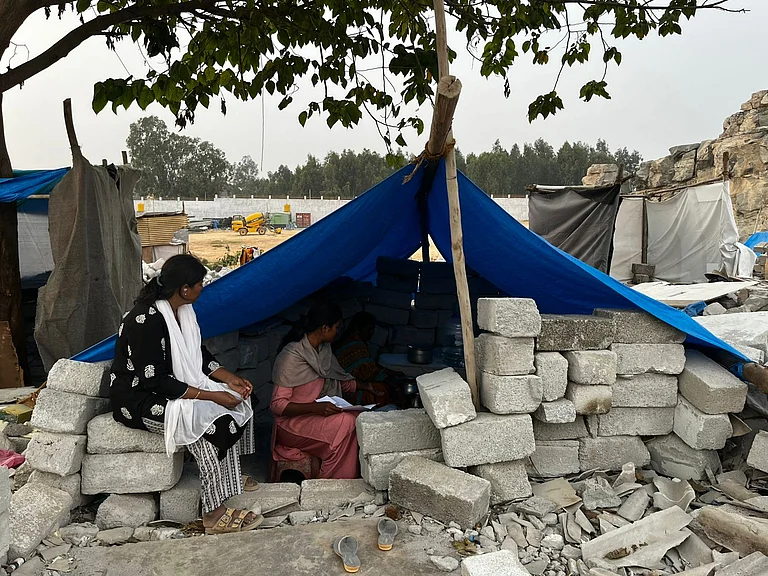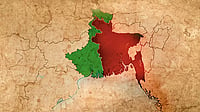Having escaped certain death by a Nazi firing squad, the enigmatic French philosopher Maurice Blanchot dedicated the rest of his long life to understand how the act of writing itself can be the most assured insurance against the inevitability of death, of erasure. The Epic City reminded me of Blanchot’s pronouncements. In this book, with the eyes of a flaneur and the pen of an itinerant, Kushanava stands at the crossroads of the manifold invitations to dusty death that makes up the current cartography of Calcutta. He manages to not only hold forth in Calcutta’s legendary chaos, but stands with grace, embracing his world wholeheartedly, writing fiercely. Kushanava returns to Calcutta—the city that rehabilitated his grandparents and was left behind by his parents. His romance is in the act of coming back itself—against the tide—to a city known for being one of perpetual abandonment.
The idea of flaneur, derived from Baudelaire’s work by Walter Benjamin, embodies a stroller, wanderer, raconteur and even a detective—particularly of city streets. The Calcutta link here is facetious. A 20-year-old Baudelaire, later to become the arch-poet of European modernity, had made an aborted trip to Calcutta. He never made it there, but had he arrived he would have seen how Calcutta wore its wealth without stealth, how the worlds of the brown barons and white sovereigns perambulated across the city’s burgeoning streets, how Calcutta embraced the tableaux of modernity. Baudelaire could have found his Madelaine in the chaos of Calcutta, just like city poets Jibanananda Das, Samar Sen or Buddhadeva Bose did a century later. But this is not only what brings Kushanava to Calcutta. The glory of Calcutta’s past is well-known and ever more outstanding, given its freefall in recent decades. In fact, for much of the last century, the city which called to its bosoms itinerants from across the globe, is mostly found abandoned to the decrepit wayside. Hence, to write about Calcutta now is perhaps to hold out against death itself.
The hero of Kushanava’s part-ode and part-elegy is not only Calcutta. It is also The Statesman, where Kushanava, after Princeton, comes to work as a rookie reporter, having been nauseated by the nakedness of the American chase for early financial success. The Statesman is the Calcutta equivalent of the T. Rex, a giant which had once roamed the colonial world with bravura confidence, only to have been left to die in a world too puny to accommodate a Jurassic leftover. Like the luxury hotel in Sankar’s Chowringhee, The Statesman and Calcutta are two sides of the same coin in The Epic City, each mirroring the other’s past glory and present decrepitude. The Statesman comrades and its indomitable Mike, the argumentative co-drinkers at Chhota Bristol, the gathering gerontocracy of roadside tea-stalls or the hapless relics of Communist militancy make up the book’s cast. Kushanava is less eager to know what makes people leave. He is keener to understand why some stay back. He writes: “My father relives the city of the Naxalite years, just as my grandmother’s world was forever in the lost village of Faridpur, just as my world somehow remained fixed in the Calcutta which was being destroyed without flood, famine and riot, a city which my generation was abandoning as if it were a sinking ship.... Inside each private memory is another private memory, like a set of Russian dolls in an infinite regression of experience of longing and loss, each separate and unconnected, by any narrative thread that other peoples call a history.”
Through a series of interviews and reflections, in no particular order, juxtaposed against one annual run of Calcutta’s unhurried clock, Kushanava corresponds with the continuous present that makes up that history, ever so close to being erased, ever so sure of escaping the same. He travels the distances in the city, both horizontal and vertical, and some of his observations—of the College Street hinterland, his neighbourhood in Maniktala, the seemingly endless street-life around Sealdah and the phantasmagoria of the post-industrial barrenness of Taratala are incredibly eloquent. Kushanava avoids a programmatic design of the book. Instead, he wonders, reflects, whispers, cajoles, argues. His book, like the city itself, does not go anywhere and that is not an appalling thing. History has been rather unkind to Calcutta, both as an engineer of its life and as an act of memorialisation of its endless trials. Kushanava’s warm book is an effort to ensure that the present at least is less cold, less clinical in its appreciation.
(The reviewer teaches at Ambedkar University, Delhi)

























